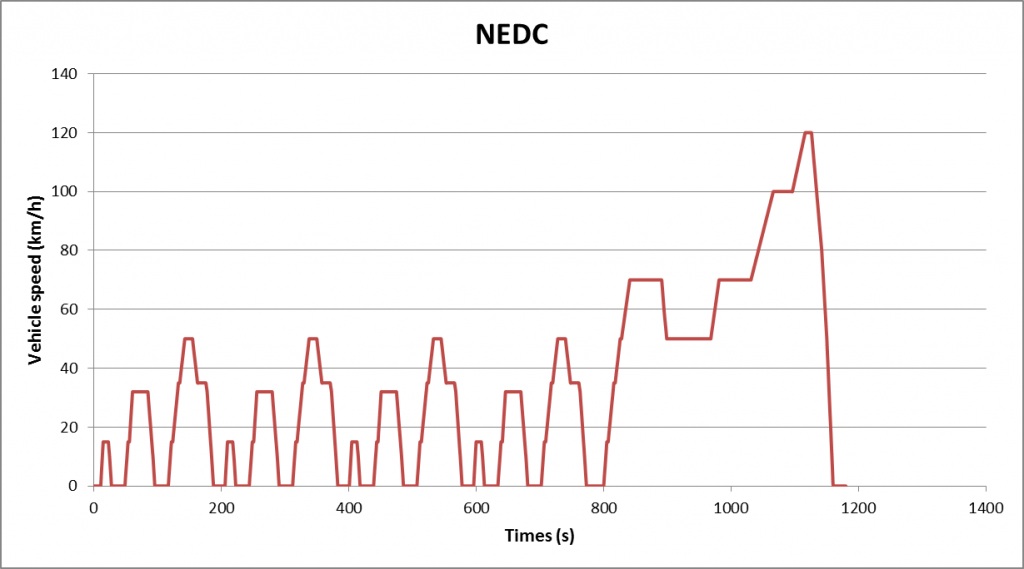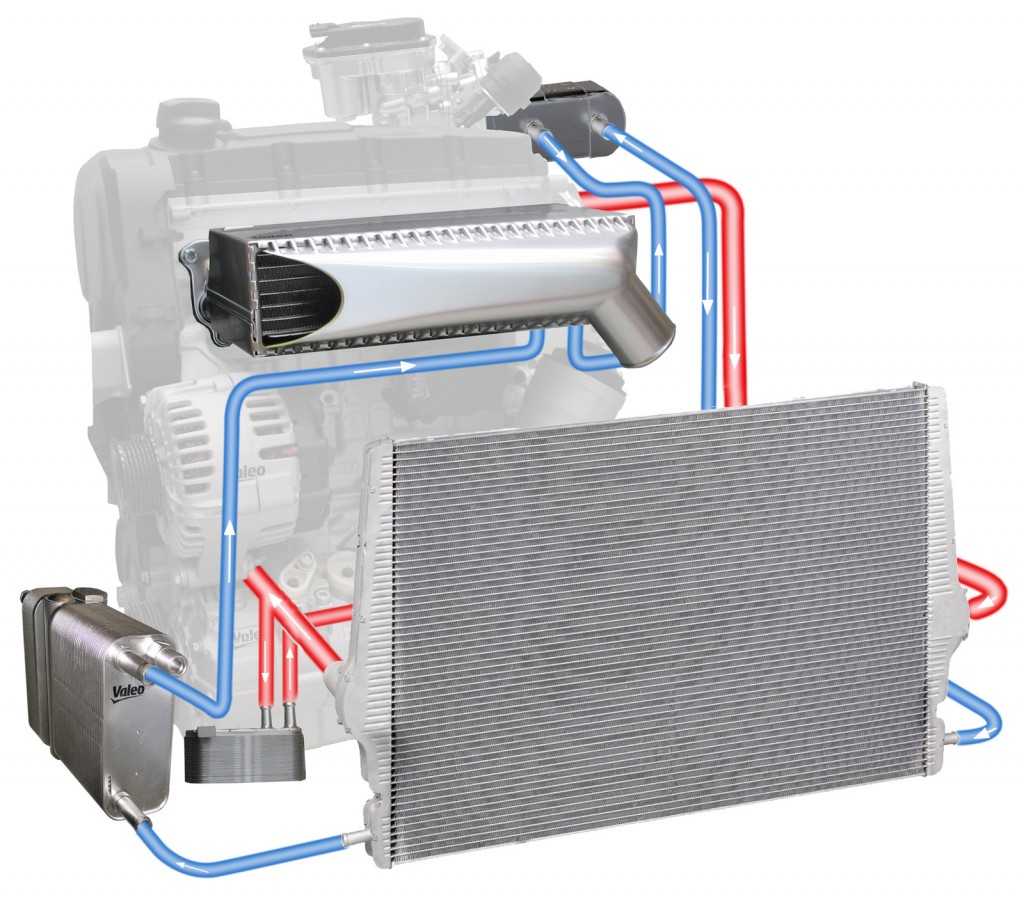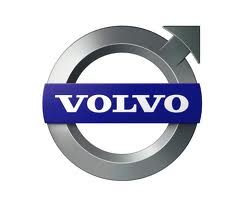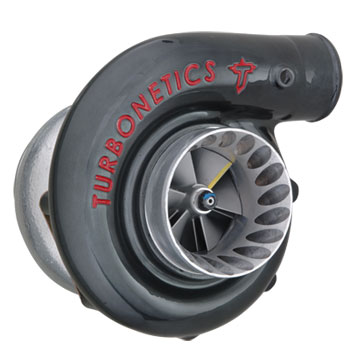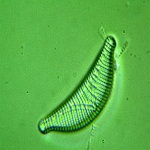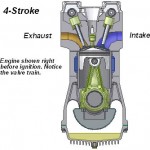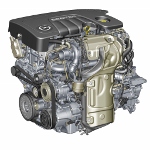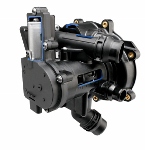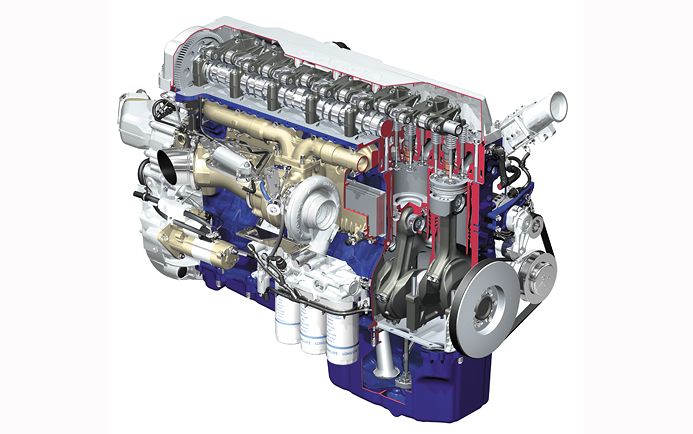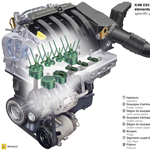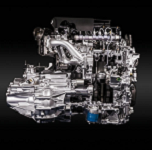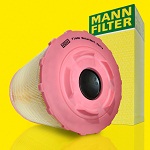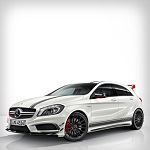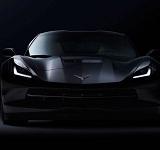What’s the best way to power your Ford F-150? There has been a total of six different engines made available for the F-150 over the years, each with its own distinct pros, cons, and quirks.
If you’re looking to buy an F-150 or modify the one you already have, choosing the right engine is an absolutely crucial decision.
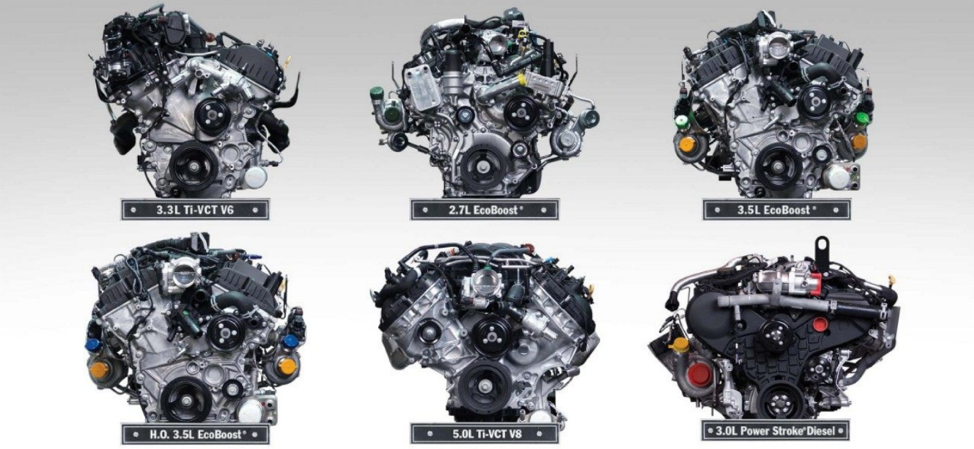
Figure 1: The six different engines used in the Ford F-150. They include three EcoBoost engines, a pair of Ti-VCT, and the obligatory big, tough Power Stroke diesel engine. Source: Western Slope Auto.
Do you want extra towing power and payload capacity? Fuel efficiency? Automatic or stick shift? As much raw power and torque as you can muster? Well, there’s an engine for that.
The Ford F-150
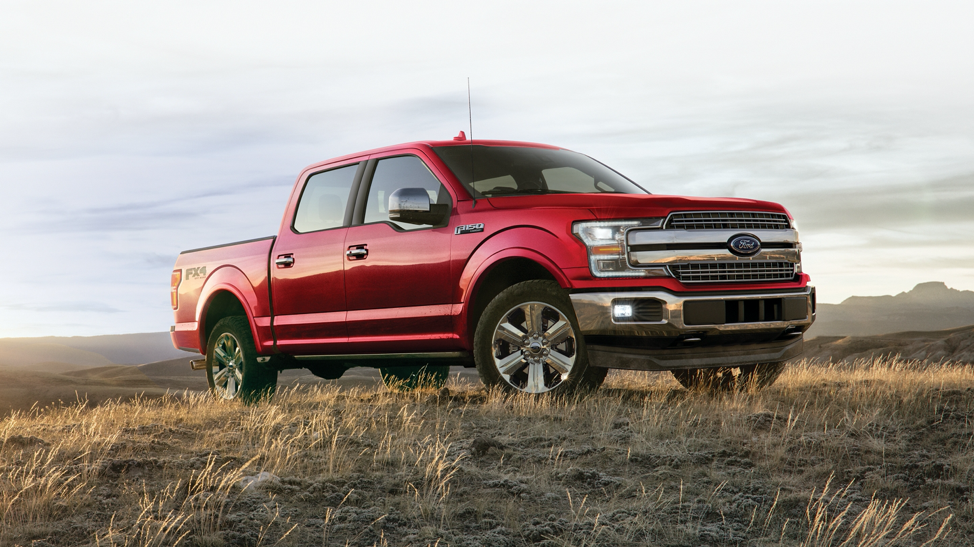
Figure 2: A modern Ford F-150. Source: Ford.
Currently in its 14th generation, the Ford F-150 pickup truck is a true icon of the American automotive industry. Built for roamers and explorers, the F-150 embodies the “built tough” slogan that Ford has made famous.
The F-150 emerged from Ford’s larger “F-series” of trucks, which has been in production since 1948. First introduced in 1975 as a compromise between the F-100 and F-250 in response to new emissions standards, the F-150 quickly rose through the ranks of Ford trucks and became one of the company’s best-selling vehicles. It took a few years of redesigns (and ditching the original 460 engine) before the F-150 assumed the form we all know it as today.
The Best Ford F-150 Engines
The engines for the F-150 can be divided into three families: EcoBoost, Ti-VCT, and Power Stroke. Some of these engines are as different as night and day. Choosing the best one depends entirely on what kind of driver you are and what you plan to do with your F-150.
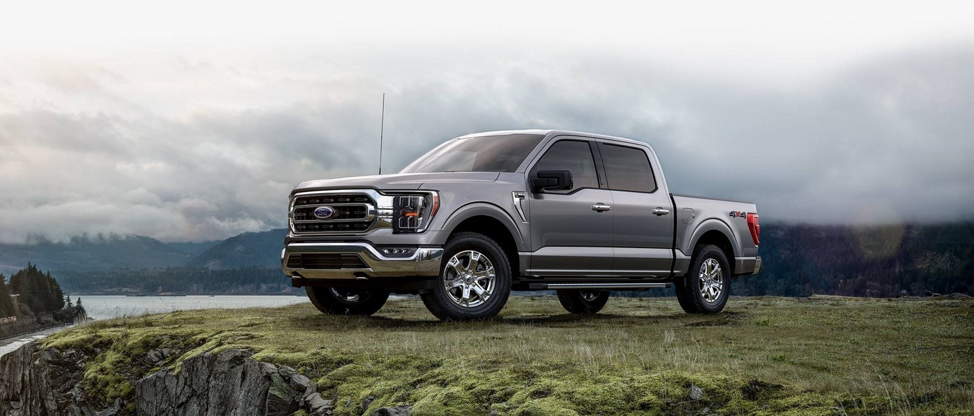
Figure 3: A majestic Ford F-150. Source: Ford.
We’ve compiled a list of some of the best engines for the Ford F-150. We’ve looking at both gasoline and diesel and tried to strike a balance between performance, power, efficiency, and price. We’ll walk through the features and capabilities of each to help you find the perfect engine for your F-150.
EcoBoost Engines
3.5L EcoBoost V6
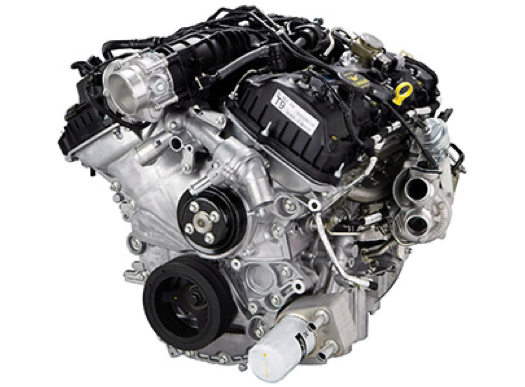
This was the first EcoBoost engine added to the F-150. The entire vehicle lineup was updated in 2011 as part of Ford’s push towards better fuel economy.
As a twin-turbo engine, this little guy can produce 375 HP and 470 lb-ft of torque. Additionally, the 3.5L engine is by far the best F-150 engine for hauling and towing. It can tow a herculean 13,200 lbs. and has a payload limit of 3,230 lbs. It is available with the 10-speed automatic transmission that can switch between 2-wheel and 4-wheel drive in a snap.
We spoke to experts from Nalley Ford in Atlanta, GA. They mentioned that, though “the 2.7 is better in fuel efficiency, the 3.5 L and 2.7L are very similar in terms of construction.” They added that “the crucial part is that 3.5 has little bit more power 2.7 has bit more fuel efficiency, and some people prefer the 3.5 because of the little but more torque.”
Sources: Underhood Service; Motor Trend; interview conducted with representative from Nalley Ford (09/04/2020).
2.7L EcoBoost V6
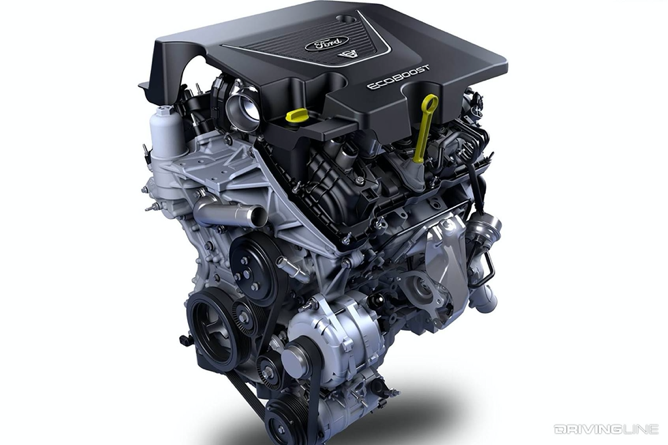
Figure 4: The 2.7L “Nano” EcoBoost is small but powerful. Source: Ford Authority.
Clocking in a 325 HP and 400 lb-ft of torque, this EcoBoost (known in some circles as the “Nano”) was added in the thirteenth generation in 2015. It comes with twin intercooled turbochargers as well as an automatic start/stop feature to help save fuel and boost efficiency. The first generation was introduced for the F-150 in 2015. The second came out in 2018 and was added alongside a 10-speed transmission system.
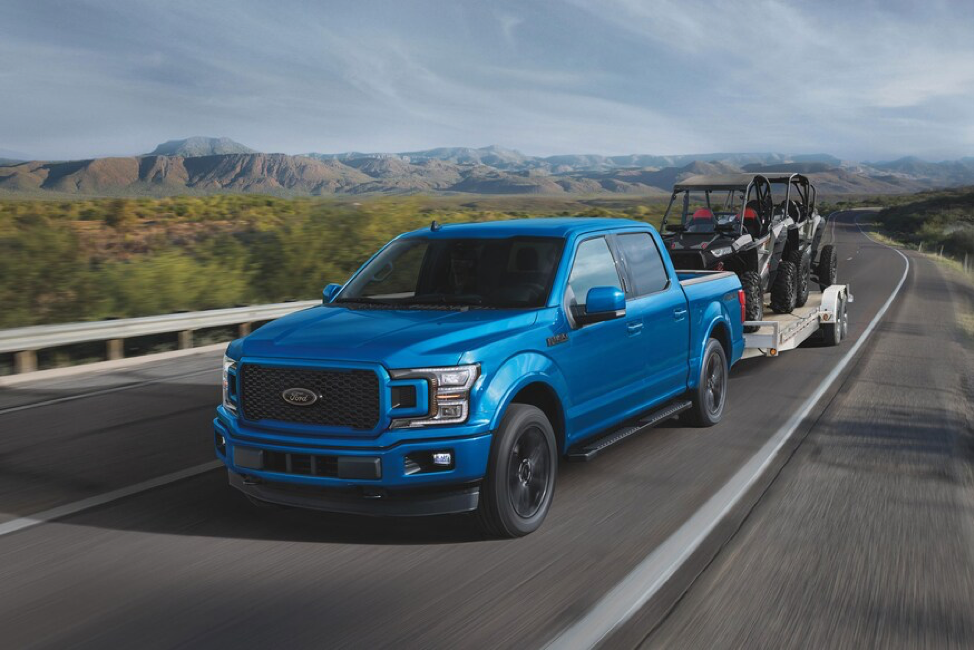
Figure 5: An F-150 showing off its towing power. Source: MotorTrend.
The latest version of the 2.7L EcoBoost V6 features a tough yet light compacted-graphite iron (CGI) block as well as port fuel injection (implemented alongside the original direct injection system). With a new exhaust gas recirculation system, fuel economy in this version was boosted even further. Finally, a super lightweight camshaft and duel-chain camshaft drive system reduces friction loss and saves weight.
Nalley Ford told us how the 2.7L EcoBoost “is really good in terms of fuel efficiency.” They added that, “when that engine came out on the market, many people were skeptical [about its power output].” However, “that engine exceeded everyone’s expectations.” It produces “a decent amount of power and some people use it to tow.” In short, the 2.7L is the most fuel-efficient F-150 engine option that still offers enough raw power for most purposes.”
All in all, this engine is a marvel of fuel efficiency and emissions reduction, while still displaying a truly impressive level of power and towing capacity.
Source: Motor Trend; WardsAuto; interview conducted with representative from Nalley Ford (09/04/2020).
High-Output 3.5L EcoBoost V6
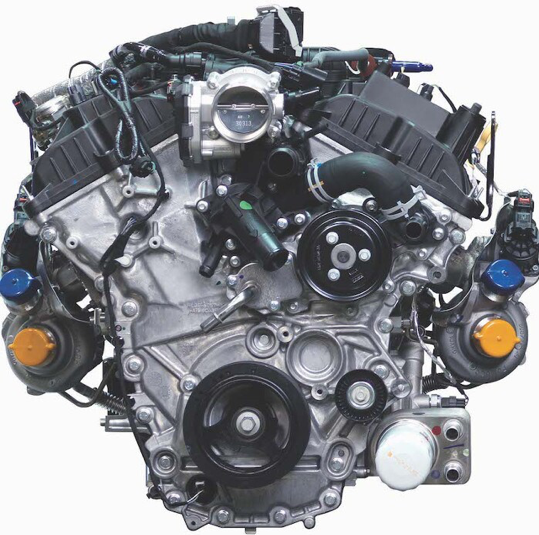
Figure 6: The “High-Output” variation of the 3.5L EcoBoost V6 does indeed live up to its name. Source: Great Lakes Ford.
This engine can produce 450 HP and 510 lb-ft of torque. That is, indeed, “high output” if we do say so ourselves. It is available only with the 10-speed automatic transmission and also features the trademarked Terrain Management System to enhance and smooth out your driving experience. Finally, it has a towing capacity of 11,11 lbs. and payload of 1,520 lbs.
As you can see, this engine sacrifices a bit of towing capacity in comparison to the original 3.5L EcoBoost, but it makes up for it in sheer power and torque.
According to experts from Richmond Ford in Richmond, VA, this variation of the 3.5L EcoBoost “is paired with the 10-speed automatic, which solved some of the original issues of the 1st generation.” The original generation engine “had moisture buildup, which this engine solved with a bigger and better intercooler.” Additionally, the designers “played with the upper end camshaft timing to help the EcoBoost better cope with the 10-speed rather than the original 6-speed.” All in all, this engine offers “very smooth, buttery smooth power delivery and can go up multiple gears at one time if need be.”
Sources: Great Lakes Ford; Interview conducted with sales representatives from Richmond Ford (09/03/2020).
Ti-VCT Engines
3.3L Ti-VCT V6
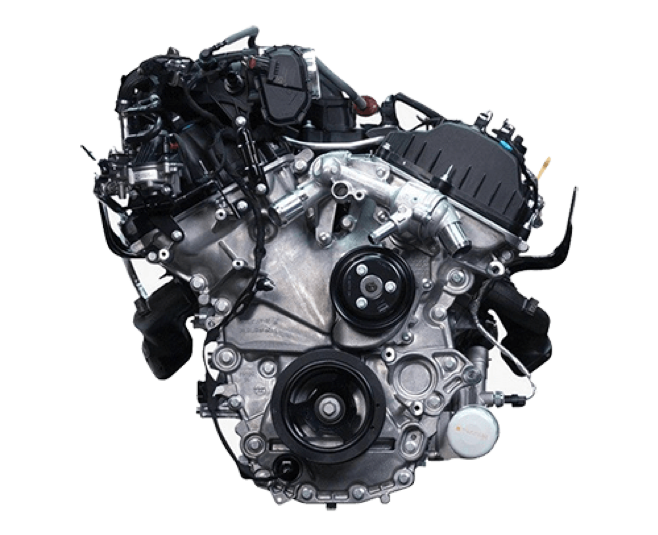
Figure 7: The 3.3L version of the Ti-VCT is a great overall option. Source: Buss Ford.
The V6 version of the Ti-VCT is a solid, all-around choice for any F-150. In addition, it’s also a very economical option. The name stands for “Twin Independent Variable Camshaft Timing” in case you were wondering.
Replacing the original 3.5L version in the F-150 in 2018, this engine belongs to the “Cyclone” engine family, which we have to say is a much cooler name than “Ti-VCT.” But engineers like their technical labels, we guess.
Anyway, this engine gets 290 HP and 265 lb-ft of torque. This is alongside a pretty serious 12.0:1 compression ratio, especially for a V6. Even better, it has increased fuel efficiency compared to the original 3.5L version.
Be aware that this is the only engine in the F-150’s repertoire that does not come standard with a 10-speed automatic transmission. But if you like your 6-speed automatics, this engine is the way to go.
5.0L Ti-VCT V8
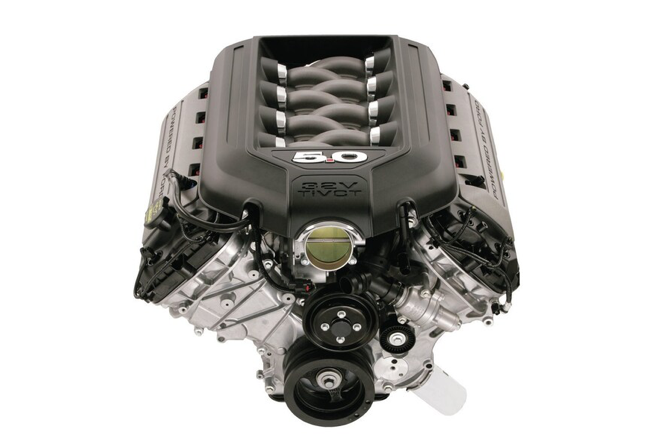
Figure 8: Source: Buss Ford.
This one is called the “Coyote” (again, much cooler name!) and it’s a 5.0L Ti-VCT engine. It replaced the 5.4L engine option in 2011. Basically, this is a bigger, stronger, and meaner version of the 3.3L “Cyclone” version discussed above, the 5.0L Ti-VCT can bring in 395 HP and 400 lb-ft of torque. However, numbers as high as 412 HP have been recorded. It’s compression ratio is 11.0:1 (when tested in the Ford Mustang).
As for the “Coyote” nickname, this originates from Ford’s well-known 5.0L Coyote racing engine from way back in the day, which served as an inspiration for this modern 5.0L Ti-VCT.
This engine is known for its all-aluminum construction, which affords it a light, powerful, and efficient performance. You’ll likely come across several mods of this engine under the hoods of street racers. Since the 8-bolt crank flange is identical to that used in other modular motors, flex plates and flywheels are interchangeable. Note, however, that this is rather complex engine and requires a M-6017-A504V control pack to install.
Sources: Buss Ford; hotrod.com.
3.0L Power Stroke Turbodiesel V6
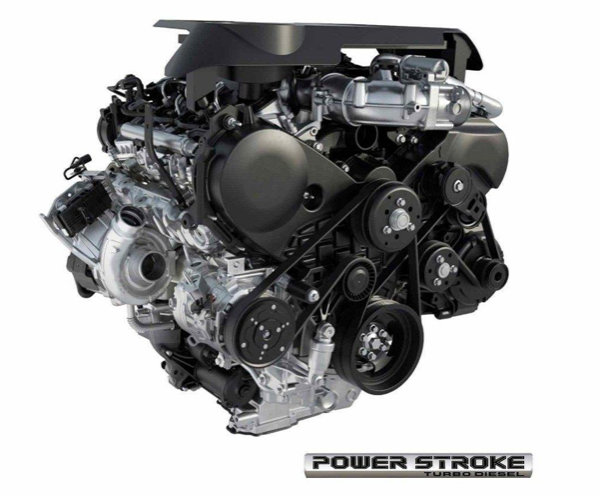
The lone Power Stroke engine to make its way into the F-150 is the 3.0L V6. Unlike most Power Stroke engines throughout the history of the brand, this one was made entirely without input from Navistar, which Ford had previously partnered with. Most engineers in the know would agree that this is definitely a good thing.
With it, F-150 owners finally got to experience the strength and reliability of a diesel engine. The 3.0L Power Stroke is a turbocharged diesel engine that offers quite impressive power and torque ratings at 250 HP and 440 lb-ft of torque. With this engine, the F-150 can tow up to 11,400 lbs. and handle a payload of up to 1,940 lbs. (though figures as high as 2,020 lbs. have been recorded.) Even further, it gets an EPA-estimated rating of 30 MPG on the highway.
This Power Stroke engine is fully compatible with the F-150’s 10-speed automatic transmission and AdvanceTrac trailer sway control. It is available in both rear- and all-wheel drive versions. In terms of sheer reliability and fuel economy, a Power Stroke-equipped F-150 is hard to top.
Sources: Jubilee Ford; Motortrend.
BONUS: 7 Best Ford Truck Engines Ever Made
1. 300ci I6
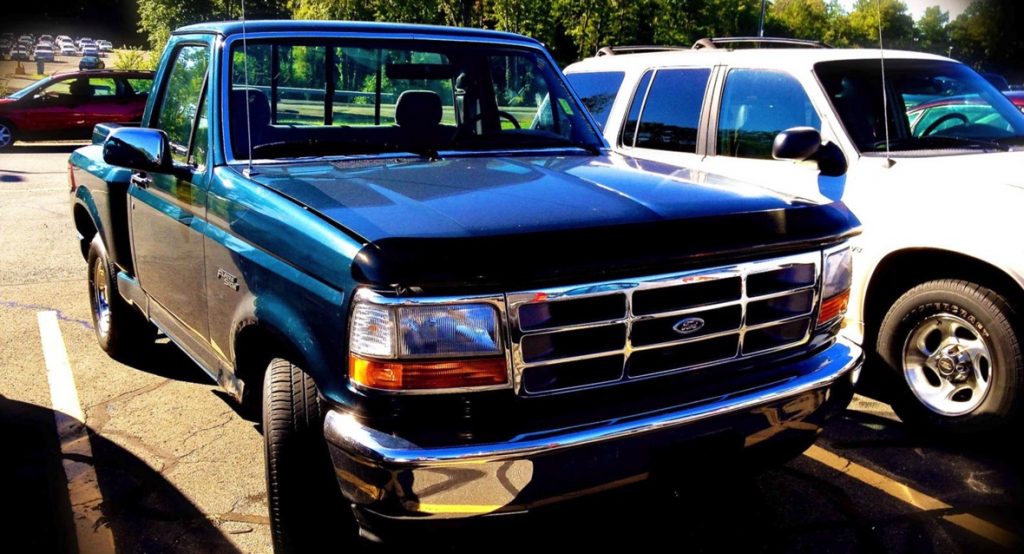
from Ford-Trucks.com: Ford’s 300ci inline-six cylinder was introduced way back in 1965, and it saw use in the F-Series for over 30 years. And the mighty I-6 didn’t become one of the longest running Ford truck engines without merit, of course. It delivered loads of torque in a supremely reliable and economical package, even seeing use in some heavy duty trucks. The 300 even saw use in generators, wood chippers, and dump trucks. Not to mention UPS delivery trucks, some of which still employ the mighty six.
2. 351 Windsor
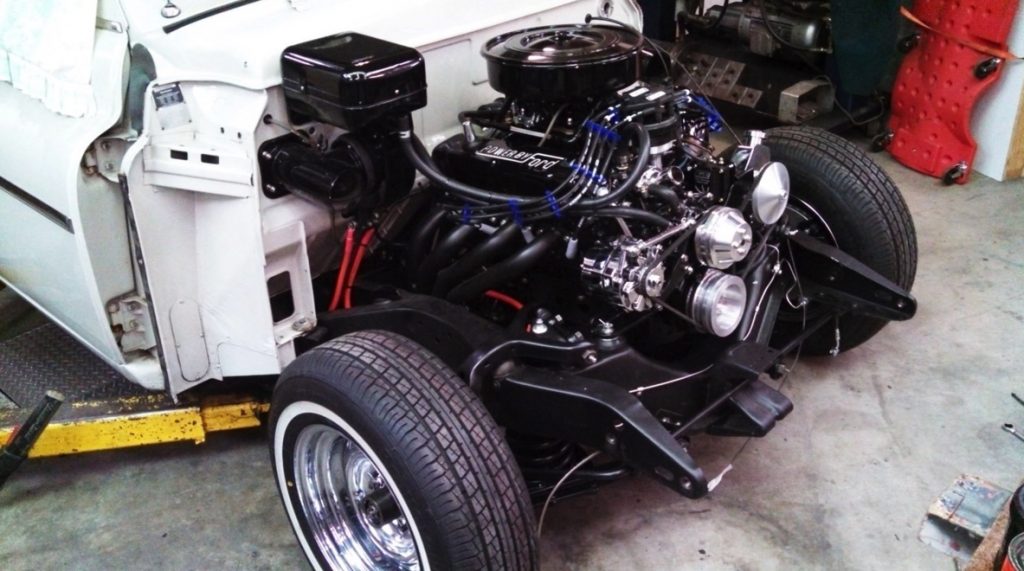
from Ford-Trucks.com: The 5.8 liter, 351ci Windsor V8 debuted in 1969 under the hood of the Mustang Mach 1, acting as a bridge between the 302 and 390. It didn’t land in a truck until 1980, but by 1981 it was the most powerful engine you could get in an F-Series aside from the 460. The Windsor proved to be a popular engine choice, even getting the nod in Ford’s high-performance Lightning. It remains a commonly used engine today, with numerous crate versions available in the aftermarket.
3. 6.7 liter Powerstroke Diesel
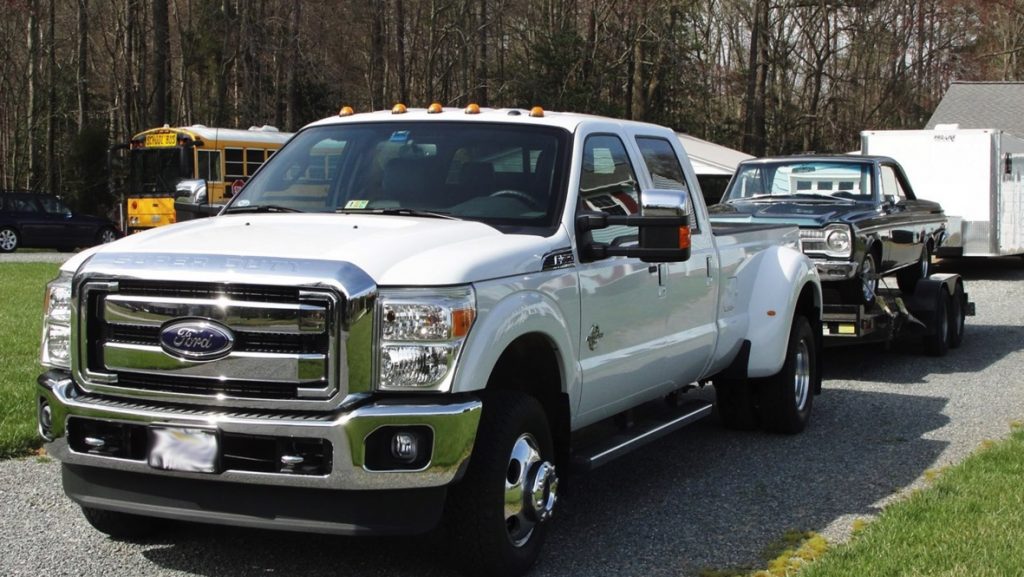
from Ford-Trucks.com: Following a series of issues with outsourced diesel engines, Ford went in-house with the 6.7-liter Powerstroke V8. The clean sheet design was both quiet and powerful, with a number of unique design features. A twin scroll turbo compressor and reverse flow heads helped the 6.7 achieve as much as 440 hp and 925 lb-ft of torque. In service since 2011, the latest iteration of Ford’s Powerstroke is proving to be quite reliable as well.
4. 5.4 liter Supercharged V8
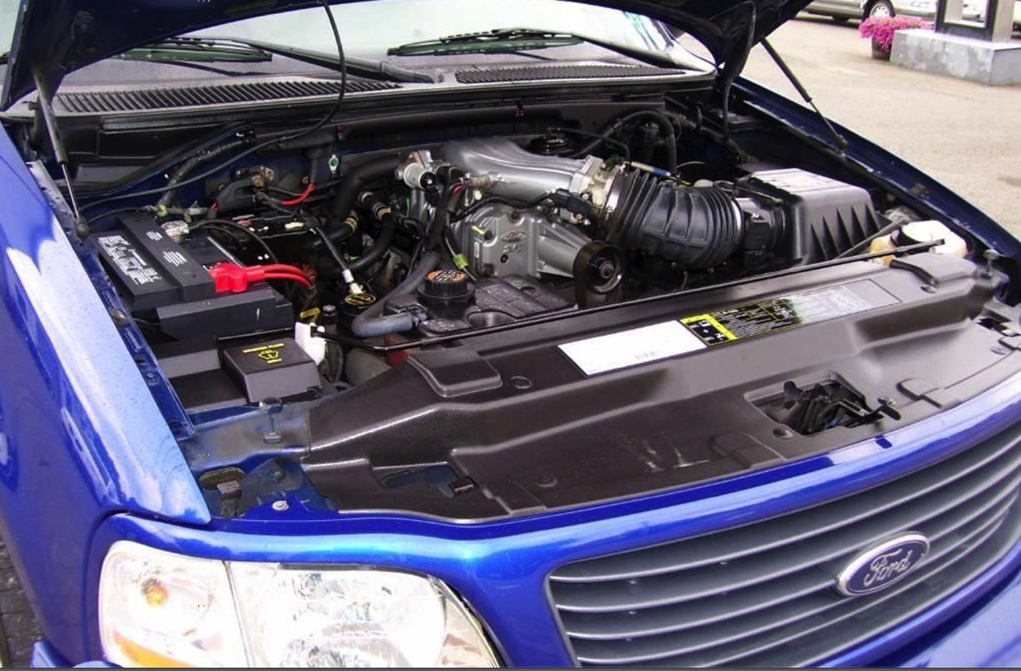
from Ford-Trucks.com: Not everyone was thrilled with Ford’s switch to modular V8’s, but it’s hard to find fault with the 1999-2003 Lightning’s supercharged 5.4 liter V8. Peaking out at 380 horsepower and 450 lb-ft of torque, the blown small block is and was an excellent platform for building a seriously fast truck. With just a few enhancements, the 5.4 is capable of laying down serious power.
5. 7.3 liter Powerstroke Diesel
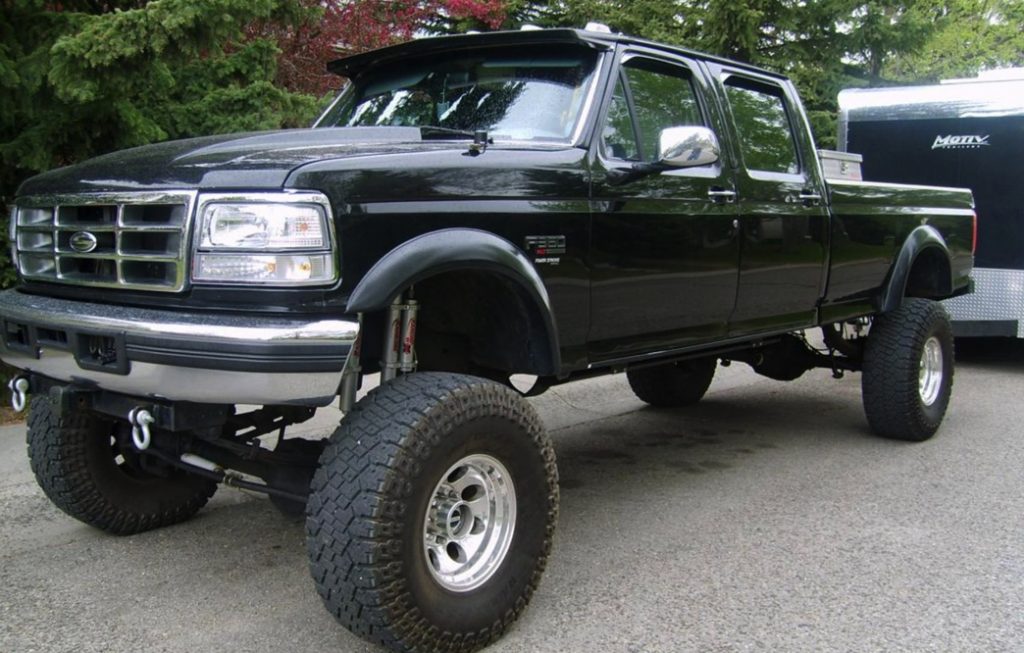
from Ford-Trucks.com: The mighty 7.3 liter Powerstroke V8 Diesel is not just one of the best engines Ford ever fitted in a truck, it’s one of the most popular engines ever fitted in a truck of any kind. Ford sold over 2 million Super Duty’s fitted with the 7.3, and the engine is well known for its reliability and performance. Sadly, the big Powerstroke was replaced in 2003 thanks to a demand for improvements in fuel economy and the need for lower emissions.
6. 390 FE V8
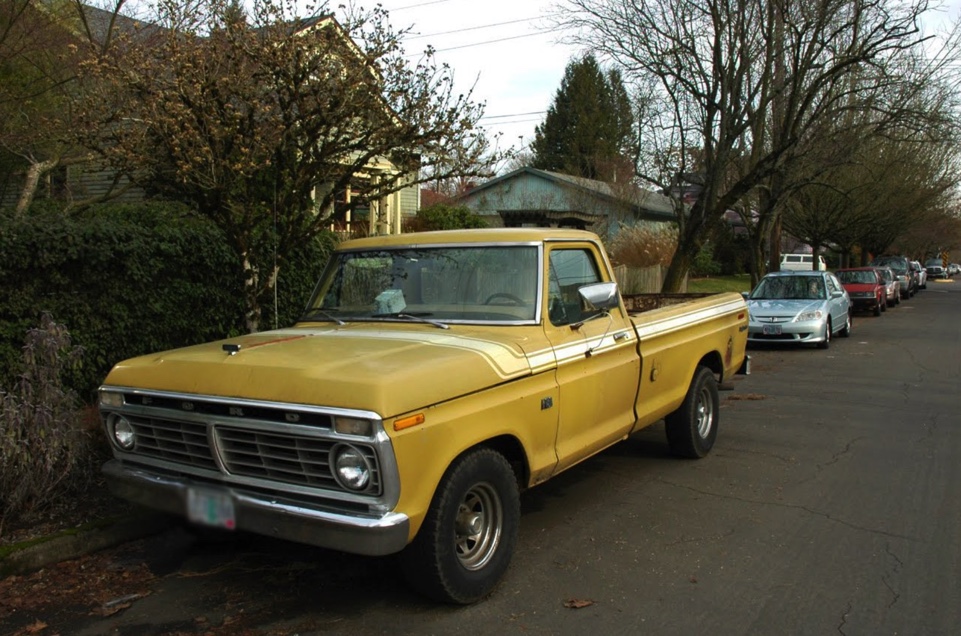
from Ford-Trucks.com: The 390 is legendary for its bulletproof bottom end and excellent torque. The FE engine landed in the F-Series beginning in 1967 and lasted into the 70’s, proving to be a popular choice among truck buyers. The 390 produced decent power in stock form but can be built to suit just about any application you can think of, from dump truck to race truck.
7. 460 V8
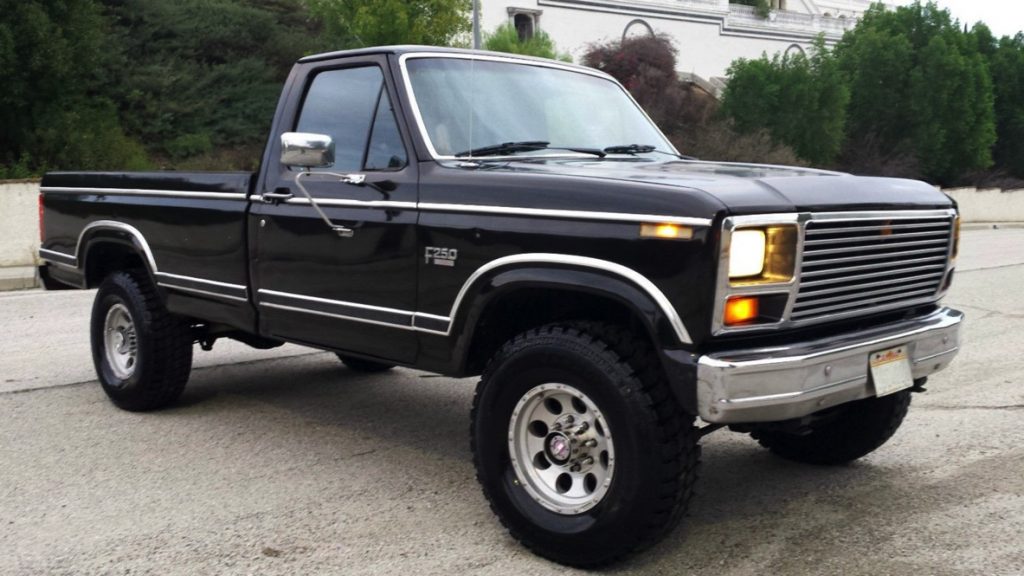
from Ford-Trucks.com: The legendary 460, one of Ford’s 385 engine family, was the Blue Oval’s final big block engine design. The 460 became available in the F-Series back in 1974 and was offered until 1996/7. The big motor remains popular today thanks to it’s towing capability and reliability. It’s also a great building block for making serious power, as even minor modifications can result in significant increases in horsepower and torque.






